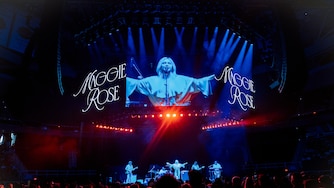The CityLink Red between Lutherville and downtown Baltimore via Towson arriving every 8 minutes; three new express bus routes; more frequent overnight and weekend service for people who don’t work typical 9–5 schedules. All that and more is possible, according to a new Maryland Transit Administration vision plan.
The agency just needs a little more than $1.1 billion to do it all.
The BMORE BUS plan, released Tuesday, is sort of a road map to a future Baltimore bus utopia. With a long list of recommendations, the MTA laid out its idealized vision for an enhanced bus network, how it could affect neighborhood mobility and an itemized breakdown of how much it would all cost.
It is not a redesign of the system, like what happened nearly 10 years ago under then Gov. Larry Hogan, but does suggest adding several new bus routes to the current mix. The agency said recommendations are based on “the latest travel data,” according to an emailed release, as well as nearly 1,000 public comments.
Recommendations include increasing the frequency of nearly every line in the system on weekdays and weekends, including overnight service. It also pitches four new regional bus lines to connect Baltimore to Annapolis, Bel Air, Columbia and Frederick, as well as four zones in the Baltimore region for exploring on-demand “microtransit” — something akin to the MTA’s mobility vans for people with disabilities.
The enhanced bus network would improve access to 39,000 in-person jobs, 21 schools and 11 healthcare facilities, according to the plan, which could be a major win for both workers and Baltimore City Public Schools students, who struggle just to get to school on time using the current system, according to a Baltimore Banner investigation.
However, the plan comes as the state is strapped for cash: The Maryland Department of Transportation is deferring projects, not funding new ones — maintaining what it has, not buying new equipment it will later have to maintain.
As it stands, the plan is just an idea. There’s no money allocated to it in the six-year capital spending program.
In the emailed release, Maryland Transportation Secretary Paul Wiedefeld said the plan “serves as a guide for future improvements,” and that the agency is making “historic investments in transit to further improve the system.”
Some advocates praised the transportation budget that passed in Annapolis this year, which included money to bolster “state of good repair” projects, which essentially keep transit systems and roads running as they should.
Those efforts to maintain infrastructure are taking precedence over expansion projects, but demonstrating a track record of proper maintenance is a key element to winning federal grants that help fund new transit lines.
The MTA is expected to release a new report this summer that will outline its backlog of those state of good repair projects — and how much money it would need to do them. The amount is expected to have grown substantially since the previous Capital Needs Inventory was released three years ago.
“Fast, frequent and reliable service are at the core of what riders want from their bus system,” Maryland Transit Administrator Holly Arnold said in the release. “We are committed to the most satisfactory rider experience possible, and to advocating at every level for the resources we need to achieve this vision.”
The MTA modestly increased frequency on some routes starting this week as part of a regular service tweak, which happens a couple of times per year. Future annual tweaks may include improvements recommended in the BMORE BUS vision plan, the agency said, meaning the plan could be implemented gradually.
Buses disperse across Baltimore from four depots, and “meaningful expansion” of the system — the kind of expansion laid out in this plan — is impossible without building a fifth bus depot, Arnold has said.
That’s because the agency simply does not have the space to park, service and dispatch more vehicles. The current fleet contains roughly 800 vehicles. The new vision hinges on being able to expand the fleet by at least 200 more vehicles, which in turn requires building a fifth bus division.
The agency estimates that building a new bus division would cost roughly $650 million, according to the vision plan, and puts the timeframe for completing it at roughly eight years from now.
The vision includes detailed estimates of how much it would cost to run more trips on each bus line, including both the price tag for new vehicles and associated operating costs. In total, that reaches roughly $365 million for additional vehicles, and about $130 million per year to run them.
“This is a great thing to see come out because it’s so concrete‚" said Brian O’Malley, president of the Central Maryland Transportation Alliance, a local research and transit advocacy nonprofit.
The plan is “offering a solution,” O’Malley said, to myriad problems, including Baltimore City public school students’ struggles to get to school on time.
Mustering the political will to make it a reality, though, will be a tall task, he said.
“There’s still a big political lift to say ‘let’s pay for that solution,’ but that’s what we want out of our agencies, to say, ‘Here’s what we can do.’”



Comments
Welcome to The Banner's subscriber-only commenting community. Please review our community guidelines.